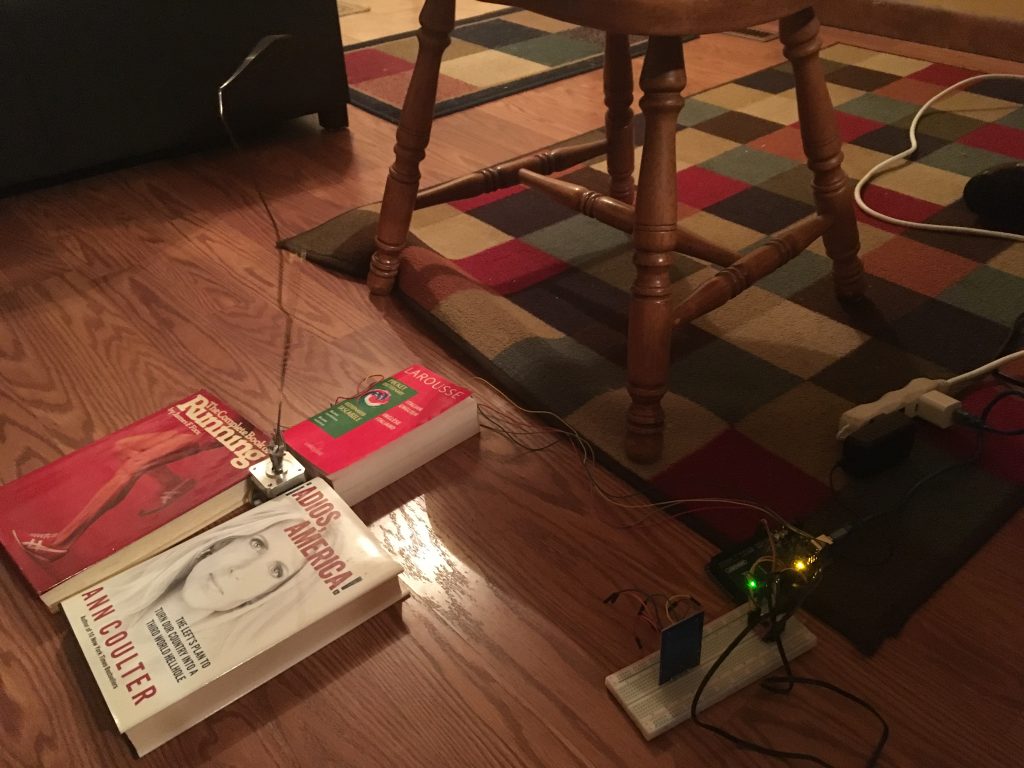As stated in the previous post, we envision our final project being a series of clips showing the motion of ripples expanding though a body of water. Therefore, we conducted a series of experiments to attempt to create a ripple like motion in fabric. We used many different techniques, including fans and hair dryers under the fabric, two people on opposite sides moving the fabric, and also a stepper motor and servo. In addition, we used After Effects to create a ripple effect for the title of the project.
For this video, I learned how to use Adobe After Effects to digitally create ripples.
Successful Attempts
This video is a fan creating a rippling effect under the fabric and then was slowed down.
In this video, two different people moved the fabric on each side one after the other to create this effect.
In this video, a hair dryer is moved under the fabric to create this effect.
Unsuccessful Attempt

In this picture, you can see the stepper motor set up and wired.
This video demonstrates my attempt at creating a rippling effect using a stepper motor; however, the results were not ideal.
Future Plan
Going forward, we need to better plan the transition between the videos.
Final Project: Fabric Waves
Our final project aims to capture the feeling of watching waves move across water. We used various fabric and captured an interesting motion from each. We edited the videos to remove the backgrounds. We also animated the motion and used color automation to better match the fabrics between clips (and to make everything prettier). We used two different types of shots: bounded shots where the fabric breaks the frame boundaries and free shots where the fabrics edges are visible in the frame. Each has as distinct appearance. If the bounded shots can be thought of as the surface of the water, the free shots of the fabric can be thought of as the plumes of water ejected after a stone breaks the surface. This is reflected in the sound design where splashing noises introduce fabric emerging from the center, and calmer wavy sounds lie in the background. We also modulated the volume of the wind when then video is more energetic.
We had both wanted to make a mechanized system for our final project, buuuut we all know what happened. One of the main draws of a mechanical system is that is facilitates multiples. When many of the same object are doing the same thing, it looks good and is satisfying almost without failure. This was especially true of fabrics because of their natural motions. We replicated our desire for this digitally, which was a learning experience but also quite fun. In theory, a video of this style could be generated from input clips to make an infinite viewing experience much like a music visualizer or a screensaver, which would be an interesting project.
We were really pleased with the patterns that arose from quite simple fabric movements. We had to do some experimenting to get the shots. We tried using fans and string to get satisfying ripples but mov the fabric by wand was most effective.
Leave a Reply
You must be logged in to post a comment.